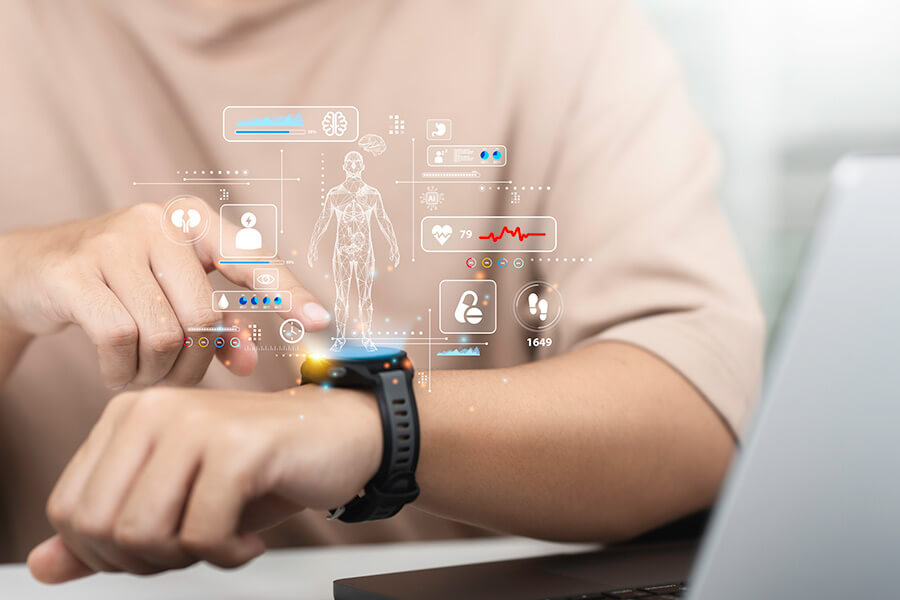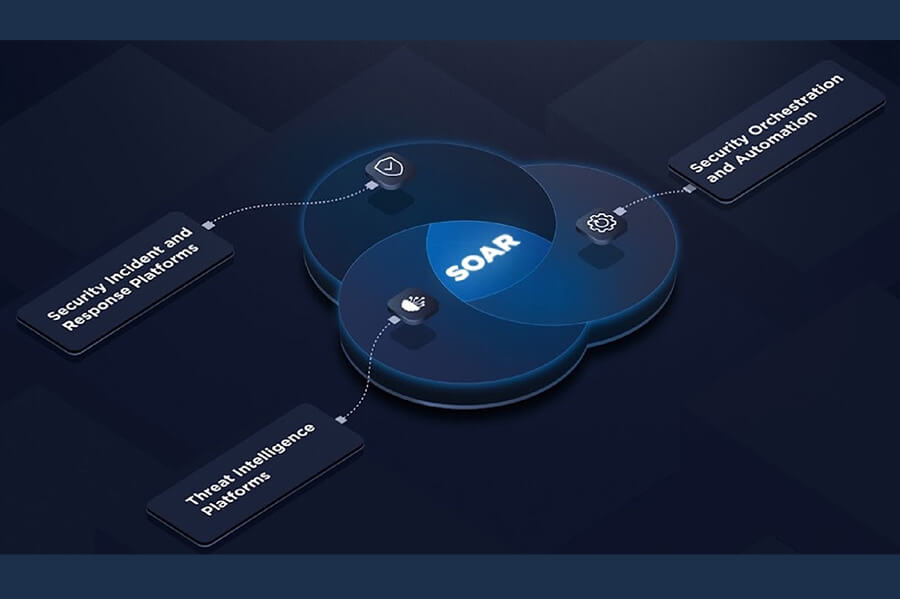Building Health and Cognitive Applications for the Next Generation of Devices
Wearable technology has evolved far beyond simple fitness trackers, emerging as sophisticated platforms that can monitor vital signs, detect cognitive decline, and even enhance human capabilities. Modern developers are creating devices that integrate artificial intelligence with advanced sensors to deliver real-time health insights and mental support. The convergence of AI-powered sensors, deep learning algorithms, and miniaturized hardware is enabling developers to create wearables that not only track physiological data but also actively contribute to human augmentation and healthcare decision-making.
The development landscape for wearable technology now spans from AI-based sensors for digital health monitoring to sophisticated systems that can detect early signs of cognitive decline. Engineers are designing devices that monitor complex biosignals while developing algorithms that analyze this data to provide meaningful health assessments. These innovations require careful consideration of sensor integration, data processing capabilities, and user experience design.
The field of cognitive healthcare through wearable signal analysis represents one of the most promising frontiers in wearable development. Developers are leveraging deep learning techniques to extract insights from physiological signals, creating opportunities for both therapeutic applications and human performance enhancement. This technological advancement positions wearable developers at the forefront of a revolution that could fundamentally change how humans interact with technology and monitor their health.
Developing Wearable Technologies for Health Monitoring
Modern wearable health devices have transformed from basic activity trackers to sophisticated medical monitoring systems that leverage artificial intelligence for real-time analysis. These platforms now enable personalized treatment approaches while maintaining strict device safety protocols and data protection standards.
Evolution of Wearable Devices in Healthcare
Early fitness trackers focused solely on step counting and basic activity monitoring. Today’s devices monitor heart rhythm irregularities, blood glucose levels, and even predict potential health issues before symptoms appear.
Wearable technologies now capture real-time environmental exposures and physiological responses. Advanced sensors can detect changes in skin temperature, heart rate variability, and sleep patterns with medical-grade accuracy.
The shift from consumer fitness devices to clinical-grade monitoring tools represents a fundamental change in healthcare delivery. Devices now integrate with electronic health records and provide continuous patient data to medical professionals.
Innovative wearable systems for health monitoring utilize advanced materials and sophisticated sensor integration. These improvements enable the detection of subtle physiological changes that traditional monitoring methods might miss.
Integration of AI and Artificial Intelligence in Health Monitoring
For the health industry, Artificial intelligence transforms raw sensor data into actionable health-related insights. Machine learning algorithms analyze patterns across multiple vital signs to identify early warning signs of medical conditions.
AI-powered wearables can predict cardiac events, detect irregular heart rhythms, and monitor chronic conditions like diabetes. The algorithms continually learn from user data to enhance prediction accuracy and minimize false alerts.
Modern devices process thousands of data points per second to generate meaningful health metrics. AI algorithms filter noise from genuine health signals and adapt to individual user baselines over time.
Wearable technology development for monitoring mental health demonstrates AI’s expanding role beyond physical metrics. These systems analyze behavioral patterns and physiological markers to assess psychological well-being.
Ensuring Device Safety and Data Security
Medical wearables must meet strict regulatory standards for accuracy and safety. Device manufacturers implement multiple layers of encryption to protect sensitive health information from unauthorized access.
Data transmission between wearables and healthcare systems requires secure protocols. End-to-end encryption ensures patient information remains protected during wireless communication and cloud storage.
Battery safety represents a critical consideration in wearable design. Devices must operate reliably without overheating or causing skin irritation during extended wear periods.
Regulatory agencies evaluate wearable devices for electromagnetic compatibility and biocompatibility. These assessments ensure devices function safely in various environments without interfering with other medical equipment.
Personalized Medicine Through Wearable Platforms
Wearable devices enable truly personalized healthcare by establishing individual baseline measurements. This approach allows for the creation of customized treatment plans tailored to each patient’s unique physiological patterns and health history.
Continuous monitoring data helps physicians adjust medication dosages and treatment protocols in real-time. Patients receive personalized recommendations for diet, exercise, and lifestyle modifications based on their specific health metrics.
Wearable technologies for healthy aging provide targeted interventions for older adults. These platforms monitor cognitive function, mobility patterns, and medication adherence to support independent living.
Personalized medicine platforms integrate genetic information with wearable data to predict disease risk. This combination enables proactive interventions before health problems develop into severe conditions.
Advancing Cognitive Augmentation with Wearable Tech
Cognitive augmentation through wearable devices represents a paradigm shift from basic health monitoring to active enhancement of human mental capabilities. AI-powered wearable devices designed to support memory and cognitive function are transforming how individuals interact with technology and manage their mental health.
Overview of Cognitive Enhancement Technologies
Modern cognitive enhancement technologies encompass a range of wearable devices that interact directly with the human nervous system. Neuro-motor controlled wearable augmentations utilize brain-computer interfaces to create seamless connections between human thought and technological response.
These systems operate through several key mechanisms:
- Neural signal detection through EEG sensors embedded in headbands or caps
- Real-time processing of brain activity patterns
- Adaptive feedback systems that respond to cognitive states
- Memory augmentation tools that provide contextual information retrieval
The technology extends beyond simple monitoring to active intervention. Devices can detect cognitive overload and automatically adjust environmental factors or provide prompts to optimize mental performance.
Brain-computer interfaces represent the most advanced form of cognitive augmentation. These systems translate neural signals into digital commands, allowing users to control devices through thought alone while simultaneously receiving cognitive support.
Application of Wearables in Mental Health and Neurorehabilitation
Healthcare applications of cognitive wearables focus on both therapeutic intervention and rehabilitation support. Wearable devices transforming cognitive health management utilize artificial intelligence to provide personalized cognitive training programs.
Mental Health Applications:
- Anxiety detection through physiological markers
- Depression monitoring via sleep and activity patterns
- Stress management through biofeedback training
- Cognitive behavioral therapy support tools
Neurorehabilitation applications target individuals recovering from brain injuries or neurological conditions. These devices provide structured cognitive exercises and track progress through measurable metrics.
The technology enables continuous monitoring outside clinical settings. Patients receive real-time feedback on their cognitive performance while healthcare providers access comprehensive data for treatment adjustments.
AI-enhanced tools supporting individuals with cognitive disabilities demonstrate significant potential for improving independence and quality of life through targeted interventions.
AI-Driven Personalization in Cognitive Augmentation
Artificial intelligence transforms wearable cognitive augmentation from generic tools into personalized enhancement systems. Deep learning approaches in cognitive healthcare achieve remarkable accuracy in analyzing wearable signal patterns and predicting cognitive needs.
Machine learning algorithms process multiple data streams simultaneously:
| Data Source | AI Application | Cognitive Benefit |
| EEG patterns | Attention state detection | Focus optimization |
| Heart rate variability | Stress level analysis | Mental resilience |
| Sleep metrics | Recovery assessment | Memory consolidation |
| Activity patterns | Fatigue prediction | Performance timing |
Personalization mechanisms include adaptive learning that adjusts to individual cognitive patterns over time. Artificial intelligence systems identify the optimal timing for intervention and customize feedback delivery methods.
Advanced wearables incorporate predictive modeling to anticipate cognitive needs before users experience difficulties. These systems learn from behavioral patterns and environmental factors to provide proactive support.
The integration of multiple AI technologies creates comprehensive cognitive assistance platforms that evolve with user requirements and demonstrate measurable improvements in mental performance metrics.
Conclusion
As wearable technology continues to advance, developers stand at the crossroads of healthcare innovation and human augmentation. By combining AI, advanced sensors, and sophisticated algorithms, they are developing devices that go beyond data collection to deliver actionable health insights and cognitive support in real-time.
The future of wearable tech depends on thoughtful programming strategies that balance technical precision with user-centered design. Developers who embrace this challenge will not only drive medical innovation but also redefine how people connect with technology to improve both physical health and cognitive well-being.








